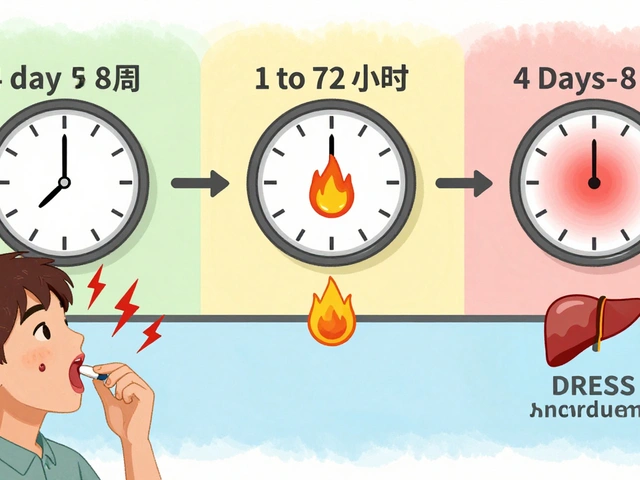Dydrogesterone: Uses, Dosing, Side Effects
Dydrogesterone is a synthetic progesterone used to treat menstrual disorders, support early pregnancy, and as part of hormone replacement therapy. It works like natural progesterone to stabilize the uterine lining, reduce bleeding, and help maintain pregnancy when the body’s own progesterone is low.
You might see dydrogesterone prescribed for luteal phase support during assisted reproduction, for irregular menstrual cycles, for heavy or painful periods, and for some cases of threatened miscarriage. Doctors also use it to manage endometrial hyperplasia and as part of combined hormone therapy for menopausal symptoms. The exact reason and dose depend on your condition and your doctor’s plan.
Typical dosing varies. For luteal support or threatened miscarriage, doctors often advise 10 to 20 mg per day, sometimes split into two doses. For menstrual disorders, doses can range from 10 to 20 mg daily for 5 to 10 days of the cycle. In menopause HRT, a common regimen is 10 mg for 10 to 14 days each month. Always follow your prescriber’s instructions — don’t adjust the dose without asking.
Side effects are usually mild but can include bloating, breast tenderness, headache, mood changes, and nausea. Rare but serious reactions include allergic responses, jaundice, or abnormal vaginal bleeding. If you notice severe abdominal pain, yellowing skin, dark urine, severe headaches, or visual changes, contact your healthcare provider right away.
Dydrogesterone can interact with other medicines. Anticonvulsants, rifampicin, and certain herbal supplements like St. John’s wort may lower its effectiveness. Likewise, combined hormone therapies and some antidepressants can change how you feel while taking dydrogesterone. Tell your doctor about every medicine and supplement you use.
If you’re pregnant, dydrogesterone may be used under medical supervision to support early pregnancy. Don’t start or stop it without consulting your obstetrician. For breastfeeding, discuss risks and benefits with your doctor because data are limited.
Want to buy dydrogesterone online? Pick licensed pharmacies with clear contact info, a real pharmacist, and positive reviews. Avoid sites that sell prescription drugs without asking for a prescription. Check shipping policies, return terms, and whether the pharmacy requires a valid prescription. If a price looks too low to be real, that could indicate counterfeit products.
Store tablets in a cool, dry place away from children. Keep a list of doses, start dates, and any side effects to share at follow up visits. If you miss a dose, take it as soon as you remember unless it’s nearly time for the next dose; do not double up.
Questions for your doctor: Why is dydrogesterone right for me? What dose and duration do you recommend? What should I watch for and when should I call you? These questions keep treatment safe.
You may need blood pressure or liver tests during long use. Mention history of blood clots, migraines, or hormone-sensitive cancers before starting. Dydrogesterone rarely affects alertness, but if you feel dizzy, don't drive or use heavy machinery until you know how it affects you.

The potential use of dydrogesterone for the treatment of endometrial hyperplasia
Hey folks! In our latest entry, we will be discussing the potential use of dydrogesterone for the treatment of endometrial hyperplasia. This is an extremely important topic since endometrial hyperplasia, an abnormal thickening of the lining of the uterus, is of great concern to many. Significantly, dydrogesterone, a progestin medication, could be a promising solution in dealing with this condition. Join us as we delve into the depths of this matter, exploring the benefits and potential implications. We hope this discussion brings clarity and contributes to your overall health awareness.
View More




